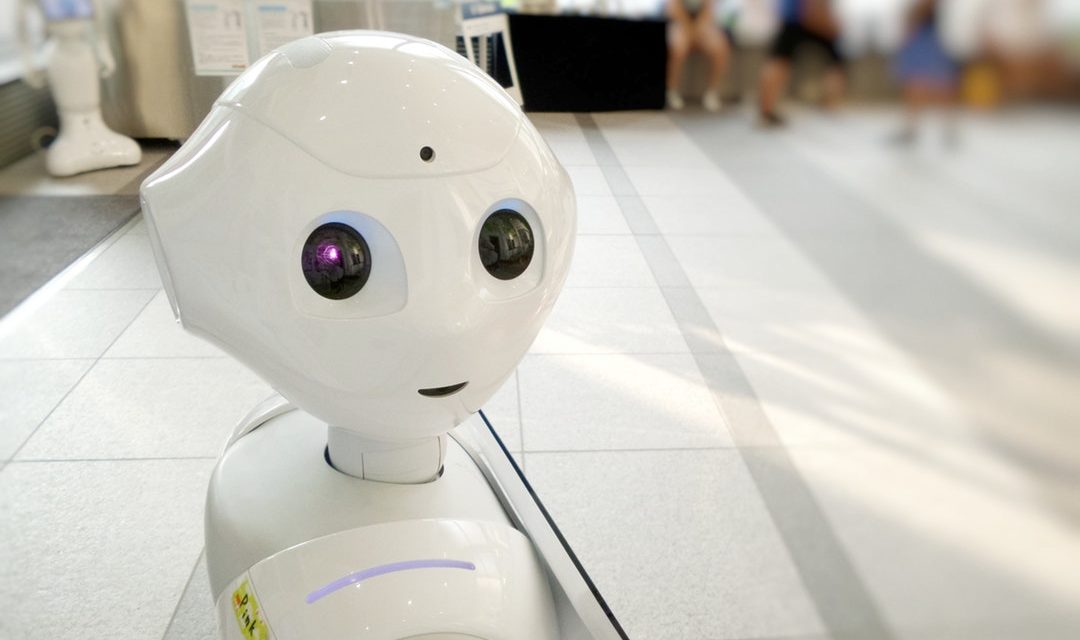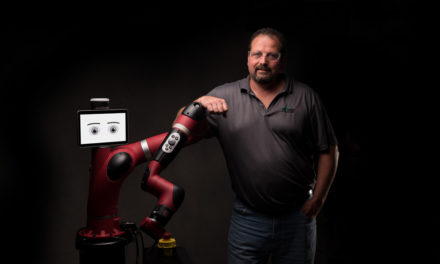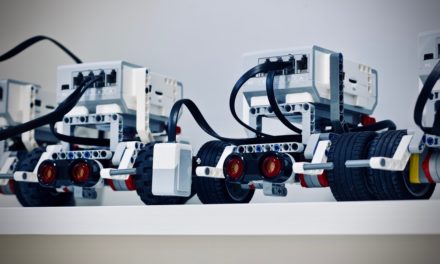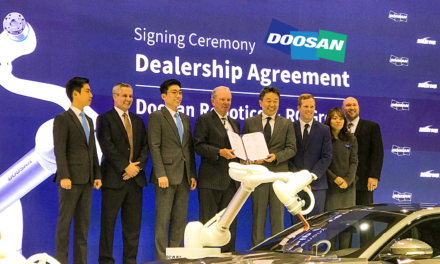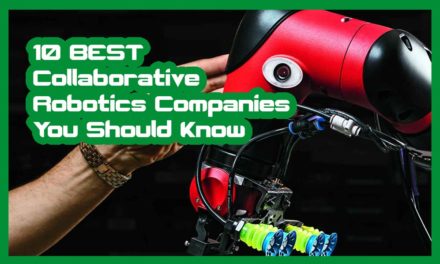By 2025, the market share of collaborative robotics could increase tenfold, and that’s just the beginning.
Automation is on the roll across industry sectors. Cobots are gaining ground at the expense of industrial robots.
Cobots are robots sharing a workspace and working in tandem with people. They are affordable and highly adaptable addition to the workforce. You can find them in all shapes and sizes— from robotic arms to exoskeletons.
Not surprisingly, manufacturing companies are pioneering this innovative tech. Both industry leaders and startups have jumped on the bandwagon.
Some people claim cobots will usher in a new era in the workplace. Skeptics beg to differ and argue hype far exceeds practical value. Let’s get into it and separate myths from facts.
A Mechanical Helping Hand
It’s clear that cobots are much more than a passing fad.
Thanks to impressive leaps and bounds in artificial intelligence (AI), the sector of collaborative robotics is booming. Cobots already pose a true game-changer on the production floor. They hold the power to completely revamp the modern supply chain.
Traditional manufacturing is the hotbed of adoption. It recognizes cobots for what they are: a reliable and adaptable resource.
They handle various labor-intensive tasks such as loading/unloading of goods in warehouses. There, they work hand-in-hand with conveyors, who move goods in and out of their reach.
Namely, these tireless helpers are designed to handle specific activities like packing and product inspection. They can complement larger industrial robots and require no psychical separation from humans. In size, they range from table-top gadgets to heavy lifters.
This may all sound like we’re talking about dystopian robot takeover here. That’s not the case.
Mechanical companions will work alongside human workers. They are here to aid, not replace them. It’s important to communicate this notion to the employees.
Winds of Change Are Strong
There are several benefits associated with cobots. They make a strong business case for the adaption.
Firstly, their integration is a way to overcome a shortage of qualified workers. It’s no longer easy to find talent willing to spend hours in factory-like settings. After all, they face humans with a bunch of tedious, strenuous, dirty, and risk-laden tasks.
What is more, collaborative robotics helps businesses cope with harsh competition from low-labor-cost countries.
Unlike flesh-and-blood workers, robots don’t require sleep, food, or rest. They are not programmed to ask for benefits and other perks. You won’t hear them refusing the third shift.
Cutting-edge models are basically plug-and-play.
The setups time is only a few hours. Reprogramming takes much less time than human training. If you know what you’re doing, a smartphone or a tablet is enough.
Many models also have easy-to-use touchscreen interfaces. Some even feature arm gesture training compatibility. There’s no need for tedious wiring and input/output hassle.
Ongoing work surrounding them revolves around new datasets, updates, and patches. Costs of ownership are dropping.
Compared to that, industrial robots are way more expensive. They call for highly-skilled IT technicians for programming and routine maintenance. Job changeovers take a lot of time and money.
Safe and Sound
Cobots tend to be rather lightweight and mobile.
Hence, they prove useful in different roles. Built-in force sensing enables them to operate with delicate objects. Think in terms of electronic assemblies and circuits.
Furthermore, most cobots require little-to-no safety guarding. Advanced sensors and 3D vision allow them to detect nonstandard and unusually activity around them. They immediately stop in contact with humans and are able to identify them.
You don’t have to take extra precautions and measures to prevent injury to human workers. Safety barriers like cages are redundant.
Using reduced mode does take a toll on their speed. Despite that, they can execute short production bursts and frequent changeovers. They accommodate rising demand in peak periods.
So, the value proposition is clear. You can optimize your workflow to get the best of both worlds (human and robotics).
The Future Is Now
In years to come, cobots will grow in numbers and expand beyond manufacturing.
AI and machine learning (ML) technologies are advancing rapidly. This constant innovation is decreasing guarding, floor space, and operator training requirements. It allows cobots to take on new, increasingly sophisticated tasks.
There’s no question small businesses will embrace this technology as a vehicle for success. But, practical application is seldom simple and straightforward.
If you want to maximize ROI, you have some ground to cover. The main challenge is related to the coordination of humans and robot workers in close proximity.
Smooth transformation hinges on your ability to select the right tasks. Namely, cobots can’t meet every automation need. It all depends on your throughput requirements.
That is to say, you need to assess your current technology and processes. Take into account the weight and complexity of objects. Determine whether tasks are of truly collaborative nature.
Remember cobots perform best when tackling simple duties. Pick-and-place activity is a prime example. It allows a slow and steady pace instead of lightning-fast motion.
That all being said, cobots are getting smarter and tougher with each passing day. They will also become more reactive and independent.
So, there is not much time to dwell on a decision. Widespread adoption could be just around the corner.
The Dawn of the Age of Collaborative Robotics
Cobots are here to stay and reshape the industry landscape.
They represent the crest of the new wave of automation. This time around, spoils aren’t reserved for big enterprises. Yes, industry giants such as Amazon and Ford are all over cobots.
But, these machines are easy to deploy and maintain. Lower costs are a powerful magnet for small and medium enterprises. They can leverage collaborative robotics to maximum potential without breaking the bank.
You too can get on top of this trend. It’s the opportunity to overcome budgetary, labor, and physical limitations, all in one stroke. Just bear in mind automation makes more sense for some tasks than others.
You need to make educated decisions and foster tight cooperation between humans and machines. Check out our videos to see robots in action and get a clear idea on how to make it happen.
It’s time to gain a competitive edge and tap into innovation at its most profitable.

